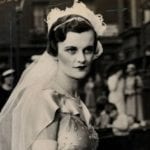 Humans
Humans  Humans
Humans  Animals
Animals 10 Animals That Humiliated and Harmed Historical Leaders
 History
History 10 Most Influential Protests in Modern History
 Creepy
Creepy 10 More Representations of Death from Myth, Legend, and Folktale
 Technology
Technology 10 Scientific Breakthroughs of 2025 That’ll Change Everything
 Our World
Our World 10 Ways Icelandic Culture Makes Other Countries Look Boring
 Misconceptions
Misconceptions 10 Common Misconceptions About the Victorian Era
 Mysteries
Mysteries 10 Strange Unexplained Mysteries of 2025
 Miscellaneous
Miscellaneous 10 of History’s Most Bell-Ringing Finishing Moves
 History
History 10 Great Escapes That Ended Right Back in Captivity
 Humans
Humans 10 Everyday Human Behaviors That Are Actually Survival Instincts
 Animals
Animals 10 Animals That Humiliated and Harmed Historical Leaders
 History
History 10 Most Influential Protests in Modern History
Who's Behind Listverse?

Jamie Frater
Head Editor
Jamie founded Listverse due to an insatiable desire to share fascinating, obscure, and bizarre facts. He has been a guest speaker on numerous national radio and television stations and is a five time published author.
More About Us Creepy
Creepy 10 More Representations of Death from Myth, Legend, and Folktale
 Technology
Technology 10 Scientific Breakthroughs of 2025 That’ll Change Everything
 Our World
Our World 10 Ways Icelandic Culture Makes Other Countries Look Boring
 Misconceptions
Misconceptions 10 Common Misconceptions About the Victorian Era
 Mysteries
Mysteries 10 Strange Unexplained Mysteries of 2025
 Miscellaneous
Miscellaneous 10 of History’s Most Bell-Ringing Finishing Moves
 History
History 10 Great Escapes That Ended Right Back in Captivity
10 Fascinating But Forgotten Women From American History
American history is jam-packed with women who’ve overcome centuries of discrimination and steered the country’s culture and politics. We generally remember people like Harriet Tubman, Sacagawea, Jackie Kennedy, and Rosa Parks . . . in other words, the legends.
And rightfully so. Those women are amazing. But for every Eleanor Roosevelt or Susan B. Anthony, there’s a counterpart forgotten by the history books. So today, we’re taking a look at 10 women who contributed to our daily lives, left an impact on the political scene, or were just average Americans in extraordinary circumstances.
10Ingrid Kosar
Invented The Pizza Bag

If you’ve ever had a pizza delivered, then you owe a debt of gratitude to Ingrid Kosar. Before Ingrid came along, chains like Domino’s and Papa John’s had a tough time delivering pizzas because no one knew how to keep the food warm during the long trek between the restaurant and the customer’s front door.
Some people wrapped the pizzas (which were already in cardboard boxes) in blankets. Some even kept sterno heaters in the backseat of their cars which, obviously, was kind of dangerous. Fortunately, Ingrid Kosar had the perfect solution, an invention that revolutionized the delivery business. Ingrid created the pizza bag.
Inspired after finding a lunch bag made of padded cotton, Ingrid teamed up with a friend named Bill Seliskar, and the two started mixing and matching fabrics in an effort to design the perfect pizza bag. To test her inventions, Ingrid actually bought multiple pizzas and drove them around town in her prototype pouches, trying to keep the pies at 60 degrees Celsius (140 °F) for 45 minutes.
In addition to retaining heat, Ingrid needed to create a bag that was easy to grip, could hold several pizzas at once, and would prevent any grease from dripping out. After quite a bit of tinkering, Ingrid started her own business in 1983—Thermal Bags by Ingrid—and after an aggressive PR campaign, she convinced Domino’s to place a $10,000 order. Soon, she was servicing other chains like Papa John’s and even providing bags for the US military. According to Ingrid, her products showed up in “outer space aboard a shuttle mission” and “inside the White House kitchen during President George H.W. Bush’s term.”
Unfortunately, things have gotten difficult since her patent expired in the early 2000s and other companies started making cheaper, inferior knock-offs. But despite competition and bankruptcy, Thermal Bags by Ingrid is still alive and kicking. So the next time you have a pizza delivered, remember to thank Ingrid for keeping your dinner nice and hot.
9Anita Corsini
Married Zulu Charlie

Anita Corsini was an Italian immigrant who came to Brooklyn when she was 14. Her father made display cases for a living, and Anita helped out by working as a piano teacher. One day in 1881, 18-year-old Anita took a break from the daily grind by visiting Bunnell’s Museum. Down in the museum basement, a showman named Signor Farini was displaying a host of “circus freaks,” the star attractions being his “Friendly Zulus.” The African warriors chanted, danced, and tossed spears for the entertainment of American audiences.
When Anita watched the performance, she fell head over heels for Mkano, a warrior-turned-performer who went by the stage name of Charlie. Anita was so smitten that she kept returning to Bunnell’s Museum, hoping Mkano would notice her. Eventually, the Zulu did spot the young girl in the crowd and was equally intrigued. The two began meeting after the show, and Anita accepted Mkano’s proposal of marriage. But when she told her father the good news, he tossed Anita into prison. He even tried to have her committed to a nearby asylum, but since New York permitted interracial relationships, he couldn’t stop the wedding.
The Italian immigrant and the Zulu warrior were married on August 25, 1881. A reporter from The New York Herald attended the ceremony and commented on Anita’s purple dress, diamond earrings, and light straw hat with a snowy white plume. During their interview, Anita told the reporter, “[Mkano] is my Othello, and I am his Desdemona.” When someone pointed out that Othello kills his bride, Anita responded with, “We love one another too much for that.”
According to the paper, the couple planned on returning to Mkano’s homeland, but we don’t really know what happened next. Zulu Charlie popped up in newspapers a few times afterward, once after losing a lawsuit against Signor Farini and once for defending himself against an abusive spectator. But other than those snippets, we’re not sure what happened to Anita and her husband, whether they went to Africa or stayed in America. Wherever they ended up, here’s hoping they stayed together despite all the social pressures of the time period.
8Martha Nelson Thomas
Invented Cabbage Patch Dolls
Back in the 1980s, Cabbage Patch Kids were all the rage. But where did this popular toy get its start? If you visit the official Cabbage Patch Kid website, you’ll learn these stuffed dolls were created by a man named Xavier Roberts. There’s even a cute origin story about how Xavier stumbled across a garden full of magical babies and promised to help them find homes.
It’s all a big lie, and we’re not just talking about the garden full of “bunnybees” and magic crystals. Instead of creating Cabbage Patch Kids on his own, Xavier Roberts stole the idea from Martha Nelson Thomas, the true brains behind the most popular doll of the 1980s.
A Kentucky native, Martha was an artist who specialized in soft sculptures. Or as one of her friends put it, Martha reinvented the doll. Martha spent her time crafting “doll babies” with big, round heads and incredibly large eyes, and during the 1970s, she sold them at arts and crafts shows across the state. “Sold” is perhaps the wrong word. Martha “adopted” her dolls to other people. When you purchased one of Martha’s babies, you got an adoption certificate and a letter from your “new child,” complete with a list of things the doll enjoyed doing.
Martha treated her doll babies like real children and didn’t view them as products. To Martha, the dolls were part art and part human being. But things changed when she sold several dolls to the aforementioned Xavier Roberts. Roberts liked the doll baby idea so much that he started selling Martha’s toys out of a Georgia gift shop. When that made Martha uncomfortable, Roberts said if she wouldn’t sell him any more doll babies, he was going to make his own.
And that’s exactly what Xavier did. He stole everything from the look of the doll right down to the adoption papers, and these Cabbage Patch Kids made Roberts a millionaire. Martha, on the other hand, was crushed, not because of the money but because her doll babies had suddenly become commercialized. She sued Roberts, forcing the Cabbage Patch crook to settle out of court in the mid-‘80s.
Martha Nelson Thomas died in 2013 of ovarian cancer, and while she never became a millionaire, she was the true creator of one of America’s most popular toys. And fittingly, at her funeral service, friends and family filled the front row of the church with Martha’s doll babies, a touching tribute to a forgotten American artist.
7Rose Marie McCoy
America’s Secret Songwriter
Before singer-songwriters took over the music scene in the 1960s, most of the big hits were churned out by professionals working in New York City. And one of the most prolific of these old-timey lyricists was Rose Marie McCoy, the greatest songwriter you’ve probably never heard of.
Born in Arkansas, Rose moved to the Big Apple when she was 19, hoping to make it as a singer. But while she was a talented performer, her real talent lay in the power of her pen. In the late ‘40s, Rose gave up her singing career and started writing music for some of the biggest stars in the business. For example, in 1954, she wrote a song called “Tryin’ to Get to You,” and the song made history when it was covered by Elvis Presley on his debut album, a record that spent 10 weeks at the top of the charts.
Rose and her writing partner, Charlie Singleton, worked out of a restaurant called Beefsteak Charlie’s. But in 1961, Rose was such a big deal that she got her own office in the legendary Brill Building, the hub of the music writing world at the time. This was an incredibly impressive feat considering Rose was an African-American woman in the early 1960s. It seems despite the politics of the time, everybody was wowed by her lyrics.
Over the years, Rose wrote for singers like James Brown, Nat King Cole, and Johnny Mathis. Several big-time record companies tried signing her up, but Rose turned them down. She liked being her own boss, and she was a hard worker. Sometimes, Rose and Charlie would bang out three new songs per day, and one of those little numbers, “I Think It’s Gonna Work Out Fine,” earned a Grammy nomination after it was performed by Ike and Tina Turner.
Later on, Rose wrote for the likes of Linda Ronstadt and James Taylor, and she even composed advertising jingles that were sung by Aretha Franklin and Ray Charles. All in all, Rose wrote around 850 songs, which is jaw-dropping by anybody’s standard. In fact, she kept writing music until she died in 2015. And while she was largely unknown during her life, Rose is finally starting to get her due. In their list of the nine greatest songwriters of all time, Songwriter Magazine declared Rose as one of the all-time masters. She was the only woman to make the cut.
6The World Trade Center Stewardesses

Instead of looking at one particular woman now, we’re going to focus on a group who helped change the Manhattan skyline. They were known as the World Trade Center Construction Guides, but before we talk about these New York City stewardesses, we need to talk about the Twin Towers.
Constructed during the late ‘60s and early ‘70s, the World Trade Center was hailed by Reader’s Digest as “the largest building project since the Egyptian pyramids.” And for a brief moment of time, the Twin Towers were the tallest structures in the world. But not everyone appreciated these hulking monoliths. In fact, some people were downright angry about this new construction project. How would it affect business? How would it affect the neighborhood?
Concerned about winning public support, Guy Tozzoli (previously the director of the World Trade Center of New York) and Lee Jaffe (the Trade Center’s PR woman) hit upon a brilliant idea. They’d win over unhappy New Yorkers with beautiful, smiling tour guides.
These World Trade Center Construction Guides were college students, mostly from New Jersey, hired to calm the public with their good looks and fast facts about the Twin Towers. These “stewardesses” were taught pretty much everything you’d ever want to know about the skyscrapers, like how they were built, what materials were being used during construction, and how the towers could withstand the force of the wind. And after several weeks of intense study, there were set loose on the streets of New York.
Each guide wore a blue mini-dress complete with a silver chain-like belt. (This uniform would eventually evolve into a skirt-vest combination.) Working in pairs, the women would sit in kiosks near the construction site, passing out brochures and answering any questions the public might have. And every half hour, one of the women would arm herself with a microphone, walk out onto a nearby observation deck, and give a speech in support of the Twin Towers. It was definitely a unique publicity stunt, and thanks to these stewardesses, the PR campaign helped sway the public into supporting one of the most important construction projects in New York—and by extension, American—history.
5Janette Fennell
Revolutionized Car Safety
On October 29, 1995, Janette Fennell was carjacked along with her husband and nine-month-old son. A pair of armed thugs burst into her garage, tossed the couple into the trunk of their Lexus, and then sped off, abandoning the baby in Janette’s front yard. During a long drive to the middle of nowhere, Janette ripped up the carpet and began tugging at the car’s wiring, hoping someone would notice the blinking lights and call for help. While her plan didn’t work, she discovered the trunk release hidden among the jumble of wires, allowing Janette and her husband to escape.
Luckily, the baby was fine, but after their harrowing experience, Janette wondered how many other people had ended up in similar circumstances. More importantly, what had happened to them? After rigorous research, she found numerous stories of people who were locked in their trunks and then were raped or murdered.
Determined to make a difference, Janette founded the Trunk Releases Urgently Needed Coalition (TRUNC), and with the help of politicians like Congressman Bart Stupak, she convinced the federal government to require that all future cars would be equipped with a glow-in-the-dark trunk release. Open up the trunk of your car, and you’ll see the result of Janette Fennell’s campaign, right there in front of your face and easy to find if you’re ever trapped.
However, this isn’t Janette’s only contribution to the automobile industry. Thanks to her hard work, you have to press down on the brake if you want to put your car into drive. That way, it’s more difficult for a kid to change gears and end up careening down the road.
Janette was also responsible for altering the switches that activate car windows. Today, they’re designed in such a way that you have to press down with your finger continuously to activate the window, preventing children from bumping the controls and getting their heads caught in the window. Janette totally revolutionized the entire automobile industry, creating safer cars and sparing adults and children alike from some pretty horrible fates.
4Mary Edward Walker
The Only Woman To Win The Medal Of Honor

If Mary Edward Walker lived today, nobody would think twice seeing her walk down the street. But in the 19th century, she raised a few eyebrows. Not only was she a fully qualified doctor, she could also rock a pair of pants. You see, Mary preferred men’s clothing. It was more comfortable. And as a graduate of Syracuse Medical College, she also operated her own medical practice in Rome, New York. So she was quite the forward thinker . . . and not very popular.
Mary once said nobody would ever know what she had to go through “just to step out the door each morning.” As a child, she was bullied, and as an adult, she was arrested several times for “masquerading” as a man. But despite the harassment, Mary Edward Walker was a woman who never caved in and never gave up—something the US government learned the hard way.
After the Civil War started in 1861, Mary tried to join the Union as a doctor. The military wasn’t willing to promote her to the position of medical officer. Infuriated, she met with Secretary of War Simon Cameron, but the man turned down her request. But Mary wasn’t giving up so easily. Eager to help the war effort, she volunteered at the Indiana Hospital. Working free of charge, she treated scores of Union soldiers, all while continually asking the government for a commission. Not shockingly, the government repeatedly turned her down, forcing Mary to create her own medical officer uniform, complete with blue jacket, green sash, and the proper insignia. And her persistence paid off in 1864, when she was finally appointed as an assistant surgeon.
During the war, Mary treated soldiers at battles like Bull Run, Fredericksburg, and Chickamauga. And in addition to treating gunshots and diseases, Mary acted as a Yankee spy, gathering information for General William T. Sherman. The Confederates tossed her into the infamous Castle Thunder Prison for several months before finally exchanging her for one of their own doctors. Afterward, Mary was invited to the White House to discuss her ordeal with Abraham Lincoln.
After the war was over, Mary Walker made history when President Andrew Johnson awarded her the Medal of Honor, making her the first and only woman to win this prestigious award. But in 1917, Congress decided the Medal of Honor could only be awarded to soldiers who’d seen combat. So they sent Mary a letter, asking her to return her prize. She refused.
Mary Walker kept that Medal of Honor and allegedly wore it until the day she died. And thankfully, when Jimmy Carter was elected president in the 1970s, he reinstated Mary’s Medal of Honor, acknowledging her service to her country “despite the apparent discrimination because of her sex.”
3Constance Kopp
America’s First Female Sheriff

When we think about the famous lawmen of American history, we remember the Wyatt Earps and the Wild Bill Hickoks. But let’s talk about Constance Kopp, America’s first female sheriff, who started her career by going head-to-head with a corrupt businessman.
Originally from Brooklyn, Constance left the Big Apple after becoming pregnant, a big no-no for a single woman in the late 19th century. After giving birth at age 19, Constance and her family moved to Wyckoff, New Jersey, where Constance told her new neighbors that her daughter, Fleurette, was actually her sister. And once they arrived in the Garden State, things calmed down a bit for the Kopps . . . until someone crashed into their buggy.
In 1914, Henry Kaufman—owner of a silk-dyeing factory—crashed his car into the Kopp family buggy. When Constance demanded he pay for the damages, the businessman just ignored her. Undeterred, Constance sent several letters asking for compensation, but when she decided to sue Kaufman, the story took a crazy turn.
The businessman declared war on the Kopp family, and soon, Kaufman and his goons were sending the family threatening letters, even demanding money from Constance . . . or else. They threatened to sell Fleurette (Constance’s daughter-sister) into prostitution, hurled rocks at the Kopp family home, and even fired a few shots at the family.
Desperate, Constance went to the police, but most of them were in Kaufman’s pocket, all except for Sheriff Robert Heath who equipped Constance, Fleurette, and a third sister named Norma with handguns. The sheriff taught the women how to shoot, and soon, Constance and Sheriff Heath were planning to bring Kaufman down.
After receiving yet another threatening letter, Constance set up a meeting with George Ewing, one of Kaufman’s thugs. When Ewing showed up for the meeting, Sheriff Heath moved in for the arrest. And with the help of a handwriting specialist, Heath and Constance proved both Kaufman and Ewing were responsible for the letters. Both bad guys were soon behind bars.
Impressed with her grit, Heath appointed Constance as undersheriff, making her the first female sheriff in American history. Later in life, the Kopp women kept on catching criminals by opening their very own detective agency.
2Ida B. Wells
The Journalist Who Fought Against Lynching

During the 1880s and 1890s, there was an average of 100 lynchings per year in the US. But what motivated these heinous crimes? If you asked the bloodthirsty mobs, they’d probably say they were protecting white women from black rapists. That was a common excuse during that time period. However, Ida B. Wells had a very different explanation.
Ida B. Wells knew a thing or two about racism. In 1884, a train conductor ordered the 25-year-old teacher to give up her first class seat to a white passenger. When she refused to move to the “Jim Crow” car, the conductor grabbed her and Ida “fastened her teeth on the back of his hand.” The conductor and two others tossed Ida off the train, but she retaliated by suing the railway. While she initially won in a lower court, the Supreme Court of Tennessee later reversed the decision. But Ida wasn’t done fighting against racism.
In the late 1880s, Ida became the co-owner and editor of a Memphis newspaper called The Free Speech and Headlight, where she tirelessly wrote about how white Southerners committed violent acts against the black community, stole their property, and deprived them of their rights.
Things got really intense in 1892, when three black men were lynched because their store was drawing customers away from white businesses. Infuriated, Ida used her paper to encourage African Americans to leave Memphis. She took things even further when she published Southern Horrors, a booklet that detailed numerous lynchings and explained the real motive behind these crimes. Contrary to popular opinion, Ida revealed these murders had nothing to do with protecting white women. As she put it, lynchings were “an excuse to get rid of Negroes who were acquiring wealth and property and thus keep the race terrorized.”
Ida’s work hit a nerve. While she was out of town, a mob burned her newspaper to the ground. Worried her return would spark a riot, Ida moved to Chicago, where she continued her mission to combat lynching. She toured the US and Europe, giving impassioned speeches, and she even convinced President William McKinley to publicly condemn these racist crimes. In addition to her anti-lynching mission, Ida helped form the NAACP, fought for women’s suffrage, and (unsuccessfully) ran for the Illinois state legislature in 1930, all before dying in 1931.
1Barbara Lee
The Congresswoman Who Voted “No”

In the immediate aftermath of the September 11 attacks, Congress passed the Authorization for the Use of Military Force (AUMF), a powerful resolution that granted President Bush power to hunt down those responsible for 9/11. The resolution was approved by almost every member of Congress, regardless of political affiliation—every member except for one lone representative.
Congresswoman Barbara Lee hails from San Francisco and was first elected back in 1998. While she’s accomplished quite a bit during her career, she’s best known for opposing the AUMF even though all her peers threw their support behind the resolution.
The AUMF contains 60 words that grant the president an incredible amount of power. The resolution states, “That the President is authorized to use all necessary and appropriate force against those nations, organizations, or persons he determines planned, authorized, committed, or aided the terrorist attacks the occurred on September 11, 2001, or harbored such organizations or persons to prevent any future acts of international terrorism against the United States by such nations, organizations or persons.”
At first glance, it sounds legitimate, but Congresswoman Lee realized the AUMF was much too vague about what the president could and could not do. While the resolution was meant to punish Al-Qaeda and the Taliban, Congresswoman Lee feared it might “spiral out of control” in the future. But she was also feeling pressure to conform to the rest of Congress, until she attended a 9/11 memorial service where the priest cautioned everyone present, “That as we act, we not become the evil we deplore.”
Inspired, Barbara Lee was the only person in either house to vote against the AUMF. Once the public found out, Congresswoman Lee received a torrent of hate mail. People labeled her a “terrorist” and a “Benedict Arnold wannabe.” She received death threats and needed 24/7 protection, but perhaps Congresswoman Lee made the right move on that September day.
Under the AUMF, the American government has launched raids into countries like Libya, Somalia, Pakistan, and Yemen—countries America isn’t at war with. In 2004, the Supreme Court ruled the AUMF granted the president power to imprison enemies, justifying extraordinary rendition and the creation of the Guantanamo Bay detention camp.
Things got worse in 2006 when Congress expanded the AUMF, giving the military permission to hunt down those responsible for 9/11 as well as any “associated forces,” a term that’s intentionally vague and isn’t included in the original resolution. The AUMF is also used to support America’s current use of drone strikes, and the Department of Justice cited the resolution to support the NSA’s notorious surveillance program.
True, her decision was incredibly contentious, but Congresswoman Barbara Lee knew voting on such a controversial resolution at such an emotional time was probably a bad idea. And it seems history is on her side.
Nolan Moore is a freelance writer from Texas. If you want, you can friend/follow him on Facebook or send him an email.








